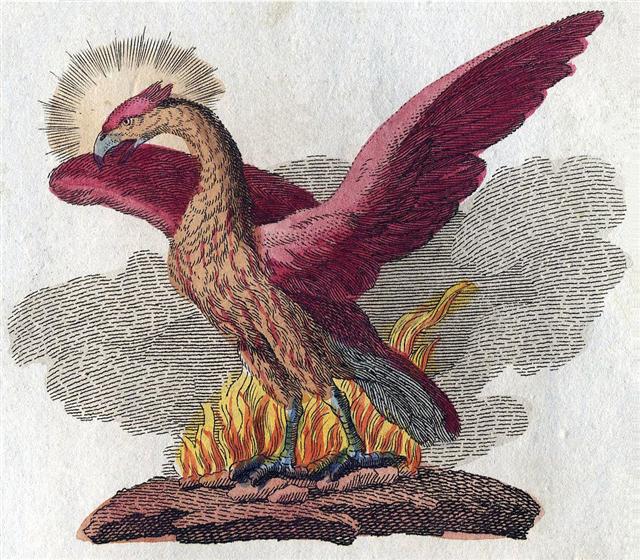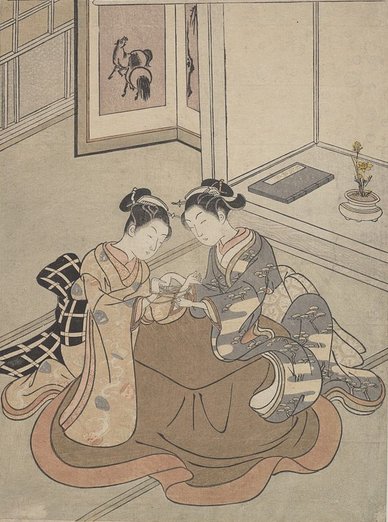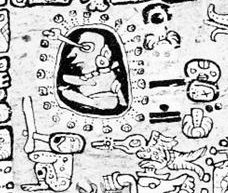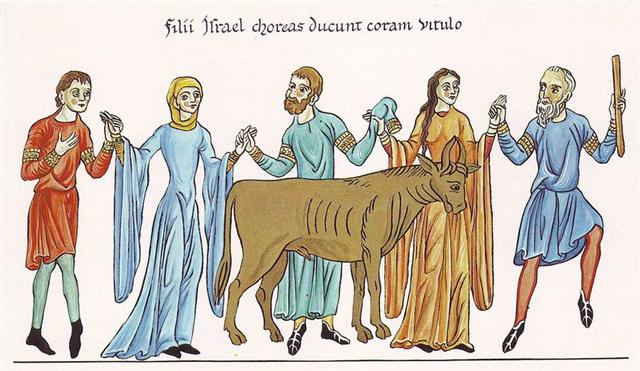Bb11.4
Once again. The Fox star was a cue (→)
for Canopus:
... The Arabs in the desert regarded it as a
test of penetrating vision; and they were accustomed to oppose 'Suhel'
to 'Suha' (Canopus to Alcor) as occupying respectively
the highest and lowest posts in the celestial family. So that
Vidit Alcor, et non lunam plenum, came to be a proverbial
description of one keenly alive to trifles, but dull of
apprehension for broad facts
...
... the lining up of Canopus with zeta, more
often with Alcor, the tiny star near zeta (Tom Thumb, in
Babylonia the 'fox'-star) has remained a rather constant
feature, in Arabic Suhayl and as-Sura. This is the 'birth' of
the valid representatives of both the poles, the sons of Mitra
and Varuna and also of their successors ...
In the Chinese list the Fox
was a cue for their 5th station named Heart. Which should
make us think about Canopus, the plumb at the bottom of the
astronomer's merkhet line:

 |
 |
 |
 |
 |
 |
|
Bb10-42 |
Bb11-1 |
Bb11-2 (420) |
Bb11-3 |
Bb11-4 |
Bb11-5 |
|
HELIACAL STARS: |
|
Uttara Bhādrapadā-27 (2nd of the
Blessed Feet) /
Wall-14 (Porcupine)
ο Oct. (1.3),
ALGENIB PEGASI = γ Pegasi
(1.8) |
χ Pegasi (2.1), θ Andromedae (2.7) |
σ Andromedae (3.0), ι Ceti (3.3), ζ Tucanae (3.5), ρ
Andromedae, π Tucanae (3.7) |
No star listed (4) |
ANKAA
= α
Phoenicis,
κ
Phoenicis (5.0)
ALPHARD (α Hydrae) |
λ Phoenicis (6.3),
β Tucanae (6.4)
*6.4 -
*41.4 = *147.0 - 182.0 =
- *35.0 |

... Above the Toucan the
astronomer's bird (Grus) stretched his long neck high
with the bird on fire (Phoenix) in front, from where
the Eridanus River originated - which was at the opposite
side of the sky compared to where the Hydra ended at the
black bird Corvus ... |
|
Sept 20 |
21 (264) |
Equinox |
23 |
24 |
25 |
| JULY 18 |
19 (200) |
20 |
21 |
22 (→ π) |
23 |
|
RIGHT ASCENSION DAYS AT THE FULL MOON: |
|
ALCHITA =
α
Corvi, MA WEI (Tail of the Horse) =
δ
Centauri
(183.1),
MINKAR =
ε
Corvi
(183.7),
ρ
Centauri (183.9) |
PÁLIDA (Pale) =
δ
Crucis
(184.6),
MEGREZ (Root of the Tail) =
δ
Ursae Majoris
(184.9) |
Hasta-13 (Hand)
/
Chariot-28 (Worm)
GIENAH
(Wing) = γ Corvi
(185.1),
ε Muscae (185.2),
ζ Crucis
(185.4), ZANIAH (Corner) = η Virginis
(185.9)
*144.0 = *185.4 - *41.4 |
CHANG SHA (Long Sand-bank) =
ζ
Corvi
(186.3) |
INTROMETIDA (Inserted) =
ε
Crucis (187.4),
ACRUX =
α
Crucis
(187.5)
*146.0 = *187.4 - *41.4 |
γ Com. Berenicis (188.0), σ Centauri (188.1),
ALGORAB = δ Corvi
(188.5),
GACRUX = γ Crucis
(188.7) |

The star named Tail of the Horse was
at the Full Moon when the Sun was at Algenib, the
last of the 4 corner stars in the waterfilled Pegasus Square. |
| mai
tae e hakaruoi |
Kua
huki |
ko
te ariki |
tere
ki te vai |
e
tagata moe ra ki te huaga e |
kua
tuu ko te toga |
 |
 |
 |
 |
 |
 |
|
Bb11-6 |
Bb11-7 |
Bb11-8 (426) |
Bb11-9 |
Bb11-10 |
Bb11-11 |
|
Sept 26 |
27 |
28 |
29 |
30 (273 → 3 * 91) |
Oct 1 |
|
γ
Muscae (189.0),
AVIS SATYRA (Bird of the Satyrs) =
η
Corvi
(189.3),
ASTERION (Starry) =
β
Canum Ven.
(189.5),
KRAZ = β Corvi,
κ Draconis (189.7) |
α Muscae (190.2), τ Centauri (190.5), χ Virginis (190.7)
ALDERAMIN (α Cephei) |
Al Áwwā'-11 (The Barker) /
Shur-mahrū-shirū-18 (Front or West
Shur)
SOMBRERO GALAXY = M104 Virginis
(191.1), ρ
Virginis (191.4),
PORRIMA = γ
Virginis,
γ
Centauri (191.5)
*150.0 = *191.4 - *41.4 |
ι Crucis (192.2), β Muscae (192.5),
MIMOSA = β Crucis
(192.9) |
No star listed (193) |
κ
Crucis (194.4),
ψ
Virginis (194.5),
μ
Crucis,
λ
Crucis (194.6),
ALIOTH (Fat Tail) =
ε
Ursae Majoris,
ι
Oct.
(194.8)
*153.0 = *194.4 - *41.4
→
17 * 9 |
 |
|
ma te
tapamea - kua haga - kua ati
ia te kava |
ma te
tapamea kua haga - kua haaati ia a kava |
e tagata rua kua oho kua
hua |
ma to
ihe |
 |
 |
 |
 |
|
Bb11-12 |
Bb11-13 |
Bb11-14
(432) |
Bb11-15 |
|
Oct 2 |
3 |
4 (277 = 80 + 197) |
5 (214 +
64) |
|
JULY 30
(211) |
31 (*132) |
AUG 1
(396 - 183) |
2 (214) |
|
JAN 29
(*314) |
30 |
31 (396) |
FEBR 1
(32) |
|
MINELAUVA
=
δ
Virginis
(195.1),
COR CAROLI =
α
Canum Ven.
(195.3) |
δ
Muscae (196.5) ,
VINDEMIATRIX (Grape Gatherer) =
ε
Virginis
(196.8) |
13h (197.8)
ξ¹ Centauri (197.1), ξ² Centauri (197.9) |
APAMI-ATSA (Child of Waters) =
θ
Virginis,
ψ
Hydrae (198.5),
DIADEM =
α
Com. Ber.
(198.9) |
|
... The medieval names Auva, Al Awwa, and
Minelauva are from the Arabic, meaning
'barking (dog)'. This star, along with
β
Vir (Zavijava),
γ
Vir (Porrima),
η
Vir (Zaniah) and
ε
Vir (Vindemiatrix), were Al
Awwā, the Barker. On Euphrates it
was Lu Lim, the Gazelle, Goat, or
Stag, - or perhaps King; and, with
ε,
probably Mas-tab-ba, another of the
seven pairs of Twin-stars of that country.
The Hindus called it Āpa, or Āpas,
the Waters; and the Chinese, Tsze Seang,
the Second Minister of State ... |
|
e i Raa |
e i te haga era - ko to
Rei |
kua oho ki te henua |
kua tupu ia i mua i te
aro |
|
Aro. Face, front,
side (of a figure); ki te aro o ...,
to the front of ... Vanaga. Presence, body,
frontispiece; ki te aro, face to
face. P Pau.: aroga, the visage;
ki te aroga, opposite. Mgv.: aro,
presence, before; i te aro, in the
presence of. Mq.: aó, face, in the
presence of, before. Ta.: aro, face,
front, presence, view. It is probable that
more than one word is confounded in alo.
The significations which appear in Southeast
Polynesia are most likely derived from a
Tongafiti alo and do not appear in
Nuclear Polynesia. The alo belly and
alo chief which do occur in Nuclear
Polynesia are also probably Tongafiti, for
in Samoa and Tonga they are honorific and
applied only to folk of rank, a good
indication of borrowing by the Proto-Samoans
from Tongafiti masters. Churchill. In the
Hawaiian group, the western portion or side
of an island was called 'the front', ke
alo, of the land, and the eastern side
was called 'the back', ke kua. The
reason of such designations must be sought
in the fact of the arrival of the
inhabitants from the west. Fornander. |
 |
 |
 |
 |
|
Bb11-16 |
Bb11-17 |
Bb11-18 (436) |
Bb11-19 |
|
Oct 6 |
7 (280 = *200) |
8 |
9 (99 + 183 =
282) |
|
AUG 3 |
4 (216 = *136) |
5 |
6 |
|
FEBR 2 |
3 |
4 (400 = *320) |
5 |
|
April 6 |
7 |
8 |
9 (99 = *19) |
|
AL DAFĪRAH (Tuft) =
β
Com. Ber.
(199.4)
*158.0 = *199.4 - *41.4 |
σ
Virginis (200.4)
*159.0 = *200.4 - *41.4 |
γ
Hydrae (201.0),
ι
Centauri (201.4)
*160.0 = *201.4 - *41.4 |
Al Simāk-12 (Lofty)
/
Chitra-14 (Bright One)
/
Horn-1 (Crocodile)
/
Sa-Sha-Shirū-19
(Virgin's Girdle)
/
ANA-ROTO-3 (Middle
pillar)
MIZAR =
ζ
Ursae Majoris (202.4),
SPICA = α Virginis,
ALCOR
(The Fox) = 80 Ursae Majoris
(202.7)
SADALMELIK (α
Aquarii)
|
 |
|
Al Batn Al Hūt-26 (Belly of
the Fish) /
Revati-28 (Prosperous)
/
1-iku (Field Measure)
MIRACH (Girdle) =
β
Andromedae,
KEUN MAN MUN (Camp's South Gate) =
φ
Andromedae
(16.0),
ANUNITUM =
τ
Piscium
(16.5),
REVATI (Abundant) =
ζ
Piscium
(16.9)
REGULUS
(α Leonis) |
ν
Phoenicis (17.4),
κ Tucanae (17.6)
*159.0 + *182.0 = 341.0 |
No star listed (18) |
ADHIL
(Garment's Train) = ξ Andromedae
(19.3),
θ
Ceti (19.7) |

... Though
Andromeda has its roots most firmly in the Greek
tradition, a female figure in Andromeda's place
appeared in Babylonian astronomy. The stars that
make up Pisces and the middle portion of modern
Andromeda formed a
constellation representing a fertility goddess,
sometimes named as Anunitum or the Lady of
the Heavens ... |
|
e tagata oho era - ki to kava e |
ka oho te Rei |
Tagata itiiti - ma to kava |
kua moe te goe |
|
Oho.
1. To go: ka-oho! go! go away!
(i.e. 'goodbye' said by the person staying behind);
ka-oho-mai (very often contracted to:
koho-mai), welcome! (lit.: come here);
ku-oho-á te tagata, the man has gone. Ohoga,
travel, direction of a journey; ohoga-mai,
return. 2. Also rauoho, hair. Vanaga. 1. To
delegate; rava oho, to root. 2. To go, to
keep on going, to walk, to depart, to retire; ka
oho, begone, good-bye; oho amua, to
preced; oho mai, to come, to bring; oho
arurua, to sail as consorts; hakaoho, to
send, a messenger. 3. Tehe oho te ikapotu, to
abut, adjoin; mei nei tehe i oho mai ai inei te
ikapotu, as far as, to; kai oho, to
abstain, to forego; hakaoho, to put on the
brakes. 4. The head (only in the composite rauoho,
hair). Churchill.
Rei.
1. To tread, to trample on: rei kiraro
ki te va'e. 2. (Used figuratively) away with
you! ka-rei kiraro koe, e mageo ê, go away,
you disgusting man. 3. To shed tears: he rei i te
mata vai. 4. Crescent-shaped breast ornament,
necklace; reimiro, wooden, crescent-shaped
breast ornament; rei matapuku, necklace made
of coral or of mother-of-pearl; rei pipipipi,
necklace made of shells; rei pureva, necklace
made of stones. 5. Clavicle. Îka reirei,
vanquished enemy, who is kicked (rei).
Vanaga. T. 1. Neck. 2. Figure-head.
Rei mua =
Figure-head in the bow.
Rei muri = Figure-head in the stern.
Henry. Mother of pearl;
rei kauaha,
fin. Mgv.: rei,
whale's tooth. Mq.:
éi, id. This is probably associable with
the general Polynesian
rei, which
means the tooth of the cachalot, an object held in
such esteem that in Viti one tooth (tambua)
was the ransom of a man's life, the ransom of a soul
on the spirit path that led through the perils of Na
Kauvandra to the last abode in Mbulotu. The word is
undoubtedly descriptive, generic as to some
character which Polynesian perception sees shared by
whale ivory and nacre.
Rei kauaha
is not this rei;
in the Maori
whakarei designates the carved work at
bow and stern of the canoe and Tahiti has the same
use but without particularizing the carving:
assuming a sense descriptive of something which
projects in a relatively thin and flat form from the
main body, and this describes these canoe ornaments,
it will be seen that it might be applied to the fins
of fishes, which in these waters are frequently
ornamental in hue and shape. The latter sense is
confined to the Tongafiti migration. Reirei,
to trample down, to knead, to pound. Pau.:
Rei-hopehopega, nape. Churchill.
Moe. To
sleep, to lie at full length, to dream, to brood, to
place, to cohabit; moe atu, to leave off, to
desist; moe atu ra, to adjourn, to postpone;
moe hakahepo, to talk in the deep; moe
aherepo, somnambulist, sleepwalker; moe
hakataha, to sleep on the side; moe no,
to oversleep, concubinage; moe tahae, to be a
light sleeper; moe tahaga, a sleeper;
moe vaeahatu, moe hakaroa, to sleep
sprawling; rava moe, to sleep sound; ariga
moe ki raro, to lie flat on the ground;
tae moe, bachelor; hakamoe, to brood,
to fold the wings; to reserve, to lay up; to
struggle. P Pau.: moe, sleep. Mgv.: moe,
sleep, to lie down, coitus, to shut the eyes. Mq.:
moe, to sleep, to lie down; haámoe, to
set down on the ground. Ta.: moe, to sleep,
to lie down. Moea raruga, lying flat.
Moeaivi, thin. Mq.: ivi, haáivi,
id. Ta.: ivi, id. Moega, mat. Pau.:
moehega, bed. Mgv.: moega, a sleeping
mat. Mq.: moena, moeka, mat, floor
cloth, bed. Ta.: moea, bed. Moemata,
to sleep with the eyes open; mea moemata,
phantom. Moemoea, a dream, vision;
tikeahaga moemoea, apparition by night. T
Mgv., Mq., Ta.: moemoea, dream. Churchill.
Mgv. Moemoe, to steal, to purloin at a food
distribution. Mq.: moemoe, to seize, to
grasp. Churchill. Ta.: 1. Moemoe, ambush.
Ha.: moemoe, id. 2. Moemoe,
Phyllanthus simplex. To.: mohemohe, a tree.
Churchill. Mq.: Moehu, exiled, banished,
prisoner of war. Ma.: morehu, a survivor.
Churchill. Goe. Milky Way.
Vanaga. |
When they on Easter Island in the night of October 6 (279,
*199) could (ideally) have observed the Full Moon at the
right ascension line of the Lady of the Heavens (*16 = *199
- *183) they would have known that Alchita was due to
return to visibility, because *199 - *16 = *183 (September
20, 263):
|
 |
*16 |
 |
 |
 |
 |
|
ALCHITA (*183) |
ANUNITUM (*16) |
ν Phoenicis
(*200) |
Oct 8 (281) |
SPICA (*202) |
|
Sept 20 (263) |
April 6 (96) |
ka oho te
Rei |
Tagata itiiti - ma to kava |
kua moe
te goe |
|
*20 |
Regulus (the little king) culminated at 21h in April 6 and
the Lucky King (Sadalmelik) culminated at 21h in October 9
(282 = 96 + 186). The sun year was longer than 12 months
counted as 30 days. 12 * 30 = 360 and 12 * 31 = 372 = 2 *
186 = 366 + 6:
... An oracle reached him from the town
of Buto, which said 'six years only shalt thou live
upon this earth, and in the seventh thou shalt end thy
days'. Mycerinus, indignant, sent an angry message to
the oracle, reproaching the god with his injustice - 'My
father and uncle,' he said 'though they shut up the temples,
took no thought of the gods and destroyed multitudes of men,
nevertheless enjoyed a long life; I, who am pious, am to die
soon!' There came in reply a second message from the oracle
- 'for this very reason is thy life brought so quickly to a
close - thou hast not done as it behoved thee. Egypt was
fated to suffer affliction one hundred and fifty years - the
two kings who preceded thee upon the throne understood this
- thou hast not understood it'. Mycerinus, when this
answer reached him, perceiving that his doom was fixed, had
lamps prepared, which he lighted every day at eventime, and
feasted and enjoyed himself unceasingly both day and night,
moving about in the marsh-country and the woods, and
visiting all the places he heard were agreeable sojourns.
His wish was to prove the oracle false, by turning night
into days and so living twelve years in the space of six
...
The beginning of side a on the G tablet corresponded to where
the Full Moon ideally should be located at the
Heart
(SEPTEMBER 20 = MARCH 21 + 183).
The glyph corresponding to SEPTEMBER 22 (265, equinox
at the time of the Golden Bull) has been designed in a way
which might have been intended to make us think of the Fox (→
Canopus → lead → plumb line → astronomer → a pair of
algined stars) → a plumb line at left.
 . .
This should then make us think not only about Spica and the
Fox but also of the double pair of stars defining the limits
of the Pegasus Square, viz. the First Spout (Scheat
and Markab at the Full Moon in JULY 1) respectively the
Second Spout (Sirrah and Algenib around 16 nights
later).

The Mayan astronomer above connects his Eye piece with the relevant star
by means of a beam of light.
At the time of the Bull the place corresponding to the 2nd
spout (line for measurement in the Pegasus Square) was at the
Eye of the Bull (Ain, ε Tauri), which corresponded to
the Chinese 19th station Net, with the Crow as
a cue.
... There was no water in the village. The lakes and rivers
were dry. Raven and Crow, two young girls who were having
their first menstrual courses, were told to go and draw
water from the ocean. Finding the journey too long, Raven
decided just to urinate into her basket-bucket. She decieved
no one and was severly scolded. Crow returned much later but
with drinking water. As a punishment, Raven was condemned
never to find water in the summer; only in winter would she
find something to drink. For that reason the Raven never
drinks during the hot months; she speaks with a raucous
voice because of her dry throat ...
At Spica and Alcor there was a single star line, at the Pegasus
Square there was a pair of such lines. Here could be the line of
association for explaining why one eye (line of sight) had to be
swallowed, viz. that corresponding to the place of the Full Moon
in the night of September 20 (Bb10-42)
→ because it was too early for the
September equinox.
... In the morning
of the world, there was nothing but water. The Loon was calling,
and the old man who at that time bore the Raven's name,
Nangkilstlas, asked her why. 'The gods are homeless', the
Loon replied. 'I'll see to it', said the old man, without moving
from the fire in his house on the floor of the sea. Then as the
old man continued to lie by his fire, the Raven flew over the
sea. The clouds broke. He flew upward, drove his beak into the
sky and scrambled over the rim to the upper world. There he
discovered a town, and in one of the houses a woman had just
given birth. The Raven stole the skin
and form of the newborn child. Then he began to cry for solid
food, but he was offered only mother's milk. That night, he
passed through the town stealing an eye from each inhabitant.
Back in his foster parents' house, he roasted the eyes in the
coals and ate them, laughing. Then he returned to his cradle,
full and warm. He had not seen the old woman watching him from
the corner - the one who never slept and who never moved because
she was stone from the waist down. Next morning, amid the
wailing that engulfed the town, she told what she had seen. The
one-eyed people of the sky dressed in their dancing clothes,
paddled the child out to mid-heaven in their canoe and pitched
him over the side ...
... in the ceremonial course of the coming
year, the king is symbolically transposed toward the Lono
pole of Hawaiian divinity ... It need only be noticed that the
renewal of kingship at the climax of the Makahiki
coincides with the rebirth of nature. For in the ideal ritual
calendar, the kali'i battle follows the autumnal
appearance of the Pleiades, by thirty-three days - thus
precisely, in the late eighteenth century, 21 December, the
winter solstice. The king returns to power with the sun.
Whereas, over the next two days, Lono plays the part of
the sacrifice. The Makahiki effigy is dismantled and
hidden away in a rite watched over by the king's 'living god',
Kahoali'i or 'The-Companion-of-the-King', the one who is
also known as 'Death-is-Near' (Koke-na-make). Close
kinsman of the king as his ceremonial double, Kahoali'i
swallows the eye of the victim in
ceremonies of human sacrifice ...

|
















 .
.
